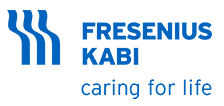预约演示
Fresenius Kabi Launches Plerixafor Injection
2023-08-09
上市批准
Expands Access to Oncology Medicines
Broadens Health Care’s Most Comprehensive Portfolio of Generic Injectable Medicines for Oncology
LAKE ZURICH, Ill.--(BUSINESS WIRE)-- Fresenius Kabi announced today it has introduced Plerixafor Injection, a generic equivalent to Mozobil®, available immediately in the United States in a 24 mg per 1.2 mL single dose vial.
Plerixafor Injection is a hematopoietic stem cell mobilizer used in combination with granulocyte-colony stimulating factor in patients with non-Hodgkin's lymphoma or multiple myeloma and is the newest addition to the company’s generic injectable oncology medicine portfolio, the largest in U.S. health care.
“Fresenius Kabi is pleased to add Plerixafor Injection to our oncology portfolio, further demonstrating our commitment to expanding access to high-quality and cost-effective oncology medicines in the United States,” said John Ducker, president and CEO of Fresenius Kabi USA. “The introduction of this generic equivalent will provide patients and clinicians with access to more choices for their cancer care.”
Fresenius Kabi offers more than 30 different oncology drugs in the U.S. and introduced its first biosimilar in 2022 with the launch of Stimufend® (pegfilgrastim-fpgk), a biosimilar of Neulasta®. The company plans to bring more oncology and oncology supportive care products to U.S. patients to further support patient care and choice.
Indications and Usage for Plerixafor Injection
Plerixafor injection is indicated in combination with granulocyte-colony stimulating factor (G-CSF) to mobilize hematopoietic stem cells (HSCs) to the peripheral blood for collection and subsequent autologous transplantation in patients with non-Hodgkin’s lymphoma (NHL) or multiple myeloma (MM).
Important Safety Information
Plerixafor is contraindicated in patients with a history of hypersensitivity to Plerixafor.
Anaphylactic shock and serious hypersensitivity reactions, some of which have been life-threatening, have occurred in patients receiving Plerixafor. Observe patients for signs and symptoms of hypersensitivity during and after Plerixafor administration for at least 30 minutes and until clinically stable. Only administer Plerixafor when personnel and therapies are immediately available for the treatment of anaphylaxis and other hypersensitivity reactions.
Plerixafor may cause mobilization of leukemic cells and subsequent contamination of the apheresis product. Therefore, Plerixafor is not intended for HSC mobilization and harvest in patients with leukemia.
Plerixafor in conjunction with G-CSF increases circulating leukocytes and HSC populations. White blood cell counts should be monitored during treatment.
Thrombocytopenia has been observed in patients receiving Plerixafor. Platelet counts should be monitored in patients who receive Plerixafor and then undergo apheresis.
In patients treated with Plerixafor in combination with G-CSF for HSC mobilization, tumor cells may be released from the marrow and subsequently collected in the leukapheresis product. The effect of potential reinfusion of tumor cells has not been well-studied.
Post marketing cases of splenic enlargement and/or rupture have been reported following the administration of Plerixafor in conjunction with growth factor G-CSF. Individuals receiving Plerixafor in combination with G-CSF who report left upper abdominal pain and/or scapular or shoulder pain should be evaluated for splenic integrity.
Plerixafor can cause fetal harm when administered to a pregnant woman. Plerixafor is teratogenic in animals. Plerixafor administration to pregnant rats during organogenesis resulted in embryo-fetal mortality, structural abnormalities, and alterations to growth at exposures approximately 10 times the exposure at the recommended human dose. Advise pregnant women of the potential risk to the fetus. Advise females of reproductive potential to use an effective form of contraception during treatment with Plerixafor and for one week after the final dose.
There are no data on the presence of plerixafor in human milk, the effect on the breastfed child, or the effect on milk production. Because of the potential serious adverse reactions in the breastfed child, advise females that breastfeeding is not recommended during treatment with Plerixafor and for one week after the final dose.
The most common adverse reactions (≥10%) during HSC mobilization and apheresis were: diarrhea (37%), nausea (34%), fatigue (27%), injection site reactions (34%), headache (22%), arthralgia (13%), dizziness (11%), and vomiting (10%).
To report SUSPECTED ADVERSE REACTIONS, contact Fresenius Kabi USA, LLC at 1-800-551-7176, option 5, or FDA at 1-800-FDA-1088 or .
This Important Safety Information does not include all the information needed to use Plerixafor Injection safely and effectively. Please see accompanying full prescribing information for Plerixafor Injection. Full prescribing information is also available at .
About Fresenius Kabi
Fresenius Kabi ( ) is a global health care company that specializes in medicines and technologies for infusion, transfusion, and clinical nutrition. The company’s products and services are used to help care for patients with critical and chronic conditions. The company’s U.S. headquarters is in Lake Zurich, Illinois. The company’s global headquarters is in Bad Homburg, Germany. To learn about U.S. career opportunities at Fresenius Kabi, visit us at and follow us on LinkedIn.
*Mozobil® is a registered trademark of Sanofi.
*Neulasta® is a registered trademark of Amgen Inc.
View source version on businesswire.com:
Contacts
Joanie Clougherty (614) 717-5741
joan.clougherty@fresenius-kabi.com
Source: Fresenius Kabi
View this news release online at:
更多内容,请访问原始网站
文中所述内容并不反映新药情报库及其所属公司任何意见及观点,如有版权侵扰或错误之处,请及时联系我们,我们会在24小时内配合处理。
靶点
-药物
Eureka LS:
全新生物医药AI Agent 覆盖科研全链路,让突破性发现快人一步
立即开始免费试用!
智慧芽新药情报库是智慧芽专为生命科学人士构建的基于AI的创新药情报平台,助您全方位提升您的研发与决策效率。
立即开始数据试用!
智慧芽新药库数据也通过智慧芽数据服务平台,以API或者数据包形式对外开放,助您更加充分利用智慧芽新药情报信息。





